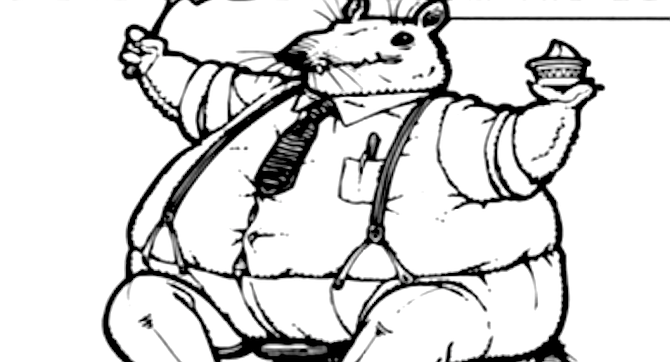 Facebook
Facebook
 X
X
 Instagram
Instagram
 TikTok
TikTok
 Youtube
Youtube

Matmail: How can anything be reduced more than one time? Like in today’s U-T food section, rats given low fat got 2 1/2 times less incidence of cancer. I’ve asked financial experts (who use the expression a lot), and I get ignored, at best. — Frank in Serra Mesa
Financial experts handle hypotheticals; they haven’t much of a clue about real-world events. It’s the art of knowing a lot without really knowing anything at all. Personally, I salute them. But if I get your statistical drift, you’re having trouble grasping the idea of something being more than 100 percent smaller than it used to be without disappearing completely. One rat getting 250 percent less cancer. Well, consider this. Say those science guys stuffed 100 rats with cheeseburgers and eclairs. Pretty soon they’ve got 100 lumbering, burping rodents, 75 of which have cancer of the cheeks. Take a new batch of 100, serve ’em nothing but chickweed and wood pulp, voila, 100 buffed rats, only 30 of which have cancer of the cheeks. In batch number two, the rate of cancer has gone down 2 1/2 times compared to batch one, from 75 per hundred to 30 per hundred. Got it? Hope so. Naturally, the science guys ignore what we all really want to know — how those 25 cream-filled rats in the first batch got away with it.


Matmail: How can anything be reduced more than one time? Like in today’s U-T food section, rats given low fat got 2 1/2 times less incidence of cancer. I’ve asked financial experts (who use the expression a lot), and I get ignored, at best. — Frank in Serra Mesa
Financial experts handle hypotheticals; they haven’t much of a clue about real-world events. It’s the art of knowing a lot without really knowing anything at all. Personally, I salute them. But if I get your statistical drift, you’re having trouble grasping the idea of something being more than 100 percent smaller than it used to be without disappearing completely. One rat getting 250 percent less cancer. Well, consider this. Say those science guys stuffed 100 rats with cheeseburgers and eclairs. Pretty soon they’ve got 100 lumbering, burping rodents, 75 of which have cancer of the cheeks. Take a new batch of 100, serve ’em nothing but chickweed and wood pulp, voila, 100 buffed rats, only 30 of which have cancer of the cheeks. In batch number two, the rate of cancer has gone down 2 1/2 times compared to batch one, from 75 per hundred to 30 per hundred. Got it? Hope so. Naturally, the science guys ignore what we all really want to know — how those 25 cream-filled rats in the first batch got away with it.
Comments